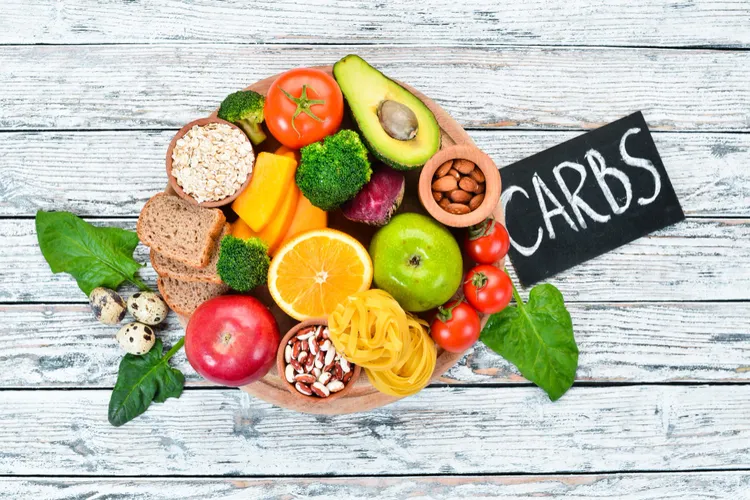Let’s Talk About Carbs: The Truth Behind Carbohydrates and How They Fuel Your Body
Carbohydrates have long been a topic of debate in the world of nutrition. Praised as an essential energy source by some and vilified as the culprit behind weight gain by others, carbs often find themselves at the center of dietary controversies. From low-carb diets like keto to carb-heavy approaches favored by athletes, the confusion around carbohydrates can leave anyone wondering: Are carbs friend or foe? The truth lies in understanding what carbs are, how they function in your body, and how to choose the right ones for your health and lifestyle. Here is everything you need to know about carbohydrates. We’ll explore their biological role, debunk common myths, compare simple vs. complex carbs, discuss their impact on health and performance, and provide practical tips for incorporating carbs into a balanced diet. Whether you’re a fitness enthusiast, a health-conscious eater, or simply curious about nutrition, this guide will help you make informed decisions about carbs. Let’s talk about carbs!

What Are Carbohydrates?
Carbohydrates are one of the three macronutrients - alongside proteins and fats - that provide energy to your body. They’re organic compounds made of carbon, hydrogen, and oxygen, found in a wide variety of foods, from fruits and vegetables to bread and candy. Carbs are your body’s preferred source of energy, powering everything from brain function to muscle movement.
Types of Carbohydrates
Carbs are classified into three main categories based on their chemical structure:
- Simple Carbohydrates (Sugars):
- What: Small molecules like glucose, fructose, and sucrose that are quickly digested and absorbed.
- Sources: Fruits (fructose), milk (lactose), table sugar (sucrose), and processed foods (high-fructose corn syrup).
- Characteristics: Provide quick bursts of energy but may cause blood sugar spikes if consumed in excess.
- Complex Carbohydrates (Starches):
- What: Larger molecules made of many sugar units, digested more slowly for sustained energy.
- Sources: Whole grains (quinoa, brown rice), legumes (lentils, chickpeas), and starchy vegetables (potatoes, corn).
- Characteristics: Offer longer-lasting energy and are often rich in fiber, vitamins, and minerals.
- Fiber:
- What: A type of carb that your body can’t digest, aiding digestion and gut health.
- Sources: Vegetables (broccoli, carrots), fruits (apples, berries), whole grains, and legumes.
- Characteristics: Promotes satiety, stabilizes blood sugar, and supports a healthy microbiome.
How Carbs Are Measured
Carbs are measured in grams and provide 4 calories per gram. Nutrition labels often list “total carbohydrates,” which include sugars, starches, and fiber. “Net carbs” (total carbs minus fiber) are sometimes used in low-carb diets, as fiber doesn’t significantly impact blood sugar.
The Role of Carbs in Your Body
Carbohydrates are more than just fuel - they’re critical for numerous bodily functions. Here’s how carbs contribute to your health and performance:
- Primary Energy Source
- How It Works: Carbs are broken down into glucose, a simple sugar that enters your bloodstream and is used by cells for energy. Glucose is stored as glycogen in your muscles and liver for later use.
- Why It Matters: Your brain relies heavily on glucose, using about 120 grams daily (roughly 480 calories). Muscles also depend on glycogen during physical activity, especially high-intensity exercise.
- Example: Eating a bowl of oatmeal before a workout provides glucose for immediate energy and glycogen for sustained effort.
- Sparing Protein
- How It Works: When carb intake is adequate, your body uses glucose for energy, sparing dietary protein for building and repairing tissues (like muscles and cells).
- Why It Matters: Without enough carbs, your body may break down muscle protein for energy, which can hinder muscle growth and recovery.
- Example: Pairing chicken with quinoa ensures protein is used for muscle repair rather than energy.
- Supporting Brain Function
- How It Works: Glucose is the brain’s primary fuel, supporting focus, memory, and mood. Low carb intake can lead to brain fog or irritability in some people.
- Why It Matters: Consistent carb intake helps maintain stable blood sugar, preventing cognitive dips.
- Example: A banana with almond butter provides quick glucose and healthy fats for sustained mental clarity.
- Promoting Gut Health
- How It Works: Fiber feeds beneficial gut bacteria, which produce short-chain fatty acids that nourish colon cells and reduce inflammation.
- Why It Matters: A healthy gut microbiome supports digestion, immunity, and even mental health via the gut-brain axis.
- Example: A lentil soup with carrots and spinach delivers fiber to support gut bacteria.
- Regulating Blood Sugar and Insulin
- How It Works: Complex carbs and fiber slow digestion, leading to gradual blood sugar rises and stable insulin release. Insulin helps cells absorb glucose for energy or storage.
- Why It Matters: Stable blood sugar prevents energy crashes, reduces hunger, and lowers the risk of insulin resistance.
- Example: Choosing whole-grain bread over white bread minimizes blood sugar spikes.
Simple vs. Complex Carbs: What’s the Difference?
The type of carbs you eat matters as much as the quantity. Here’s a breakdown of simple vs. complex carbs and how they affect your body:
Simple Carbs
- Characteristics: Quickly digested, causing rapid blood sugar spikes and insulin release. Often low in nutrients unless from whole foods like fruit.
- Pros:
- Provide fast energy, ideal for pre- or post-workout.
- Found in nutrient-rich foods like fruits and milk, which offer vitamins and minerals.
- Cons:
- Excess consumption of refined sugars (soda, candy) can lead to weight gain, inflammation, and insulin resistance.
- May cause energy crashes due to rapid blood sugar drops.
- Best Sources: Whole fruits, milk, and small amounts of honey or maple syrup. Limit refined sugars from processed foods.
Complex Carbs
- Characteristics: Digested slowly, providing sustained energy and stable blood sugar. Often high in fiber, vitamins, and minerals.
- Pros:
- Promote satiety, aiding weight management.
- Support heart health, gut health, and blood sugar control.
- Nutrient-dense, delivering B vitamins, iron, and antioxidants.
- Cons:
- May take longer to prepare (e.g., cooking whole grains).
- Overeating even complex carbs can lead to excess calorie intake.
- Best Sources: Whole grains (oats, barley), legumes, starchy vegetables, and non-starchy vegetables.
Key Takeaway: Prioritize complex carbs for daily nutrition and use simple carbs strategically (e.g., around workouts or in nutrient-rich forms like fruit).
Carbs and Health: Benefits and Risks
Carbs play a vital role in health, but their impact depends on quality, quantity, and individual needs. Let’s explore the benefits and potential risks.
Health Benefits of Carbs
- Energy and Performance:
- Carbs fuel high-intensity activities like running, cycling, or weightlifting, enhancing endurance and strength.
- Studies show athletes on moderate-to-high-carb diets perform better than those on low-carb diets.
- Heart Health:
- Fiber-rich carbs (whole grains, legumes) lower LDL (“bad”) cholesterol and reduce heart disease risk, as seen in the Mediterranean diet.
- A 2019 study found that higher whole-grain intake was linked to a 15% lower risk of cardiovascular events.
- Weight Management:
- High-fiber carbs promote satiety, reducing overeating. A 2020 meta-analysis showed that whole-grain consumption was associated with lower body fat.
- Blood Sugar Control:
- Complex carbs with a low glycemic index (e.g., lentils, sweet potatoes) improve insulin sensitivity and reduce type 2 diabetes risk.
- Gut and Immune Health:
- Fiber supports a diverse microbiome, which strengthens immunity and reduces inflammation.
Potential Risks of Carbs
- Excess Refined Carbs:
- Diets high in refined sugars and starches (white bread, pastries) are linked to obesity, type 2 diabetes, and heart disease due to blood sugar spikes and inflammation.
- A 2021 study found that high intake of refined carbs increased mortality risk by 10%.
- Overconsumption:
- Eating more carbs than your body needs (especially without exercise) can lead to excess calorie storage as fat.
- Portion control is key, even with healthy carbs.
- Individual Variability:
- Some people, like those with insulin resistance or PCOS, may benefit from lower-carb diets to manage blood sugar.
- Genetic factors can influence carb tolerance, requiring personalized approaches.
Key Takeaway: Focus on nutrient-dense, fiber-rich carbs in appropriate portions to maximize benefits and minimize risks.
Carbs and Popular Diets: Where Do They Fit?
Carbs are a hot topic in dietary trends, with some diets embracing them and others restricting them. Here’s how carbs fit into popular eating patterns:
- Mediterranean Diet:
- Carb Role: Emphasizes complex carbs (whole grains, legumes, fruits, vegetables) as a core component, providing 40–50% of calories.
- Why It Works: High fiber and nutrient density support heart health, weight management, and longevity.
- Ketogenic Diet:
- Carb Role: Severely restricts carbs (5–10% of calories, or 20–50 grams daily) to induce ketosis, where fat is burned for energy.
- Why It Works: Effective for weight loss and blood sugar control in some, but may not suit long-term needs or active lifestyles.
- Low-Carb Diets (e.g., Atkins, Paleo):
- Carb Role: Limits carbs to 20–30% of calories, focusing on protein and fat. Paleo emphasizes carb sources like sweet potatoes and fruits.
- Why It Works: Can aid weight loss and stabilize blood sugar but may lack fiber if not planned carefully.
- High-Carb, Low-Fat Diets:
- Carb Role: Carbs make up 60–80% of calories, often used by endurance athletes or plant-based eaters.
- Why It Works: Supports athletic performance and energy needs but requires high-quality carbs to avoid nutrient deficiencies.
Key Takeaway: Carb needs vary by individual goals, activity level, and health status. Consult a dietitian to find the right balance for you.
Common Myths About Carbs
Carbs are surrounded by misinformation. Let’s debunk some common myths:
- Myth 1: Carbs make you fat.
- Truth: Excess calories, not carbs alone, lead to weight gain. High-fiber carbs can actually aid weight loss by promoting satiety.
- Myth 2: All carbs are bad for you.
- Truth: Complex carbs from whole foods are nutrient-dense and essential for health. It’s refined carbs that pose risks in excess.
- Myth 3: Low-carb diets are best for everyone.
- Truth: Low-carb diets benefit some (e.g., those with diabetes), but active individuals and most healthy people thrive on moderate carbs.
- Myth 4: Carbs cause diabetes.
- Truth: Poor diet quality (high refined carbs, low fiber) contributes to diabetes risk, but complex carbs can improve insulin sensitivity.
- Myth 5: You don’t need carbs because fat and protein can provide energy.
- Truth: While fat and protein can be used for energy, carbs are more efficient, especially for brain function and high-intensity exercise.
Practical Tips for Incorporating Healthy Carbs
To make carbs work for you, focus on quality, timing, and balance. Here are 10 practical tips to optimize your carb intake:
- Choose Whole Grains Over Refined
- Why: Whole grains retain fiber, vitamins, and minerals lost in refining.
- How: Swap white rice for brown rice, white bread for whole-grain, or pasta for whole-wheat or chickpea pasta.
- Example: Make a quinoa bowl with roasted veggies and grilled chicken.
- Fill Half Your Plate with Vegetables
- Why: Non-starchy veggies provide fiber and micronutrients with minimal carbs, while starchy veggies offer sustained energy.
- How: Include leafy greens, broccoli, or zucchini at every meal, and add sweet potatoes or corn occasionally.
- Example: Roast sweet potatoes and Brussels sprouts as a side dish.
- Pair Carbs with Protein and Fat
- Why: Combining macronutrients slows digestion, stabilizing blood sugar and enhancing satiety.
- How: Add nuts to oatmeal, avocado to toast, or hummus to veggie sticks.
- Example: Spread almond butter on a banana for a balanced snack.
- Time Carbs Around Activity
- Why: Carbs are most effective when your body needs energy, like before or after exercise.
- How: Eat a carb-rich meal 2–3 hours before a workout (e.g., oats with fruit) and a carb-protein combo post-workout (e.g., rice with salmon).
- Example: Have a whole-grain wrap with turkey before a gym session.
- Eat Fruit for Natural Sweetness
- Why: Whole fruits provide fiber, vitamins, and antioxidants, unlike refined sugars.
- How: Snack on apples, berries, or oranges instead of candy or soda.
- Example: Blend frozen berries into a smoothie with Greek yogurt.
- Include Legumes Regularly
- Why: Legumes offer complex carbs, protein, and fiber, making them a nutrient-dense choice.
- How: Add lentils to soups, chickpeas to salads, or beans to wraps.
- Example: Make a chickpea curry with brown rice for dinner.
- Limit Added Sugars
- Why: Excess sugar contributes to inflammation and weight gain without nutritional value.
- How: Check labels for hidden sugars (e.g., in sauces or drinks) and aim for less than 10% of calories from added sugars (50 grams on a 2,000-calorie diet).
- Example: Swap soda for sparkling water with a splash of lemon.
- Experiment with Carb Cycling
- Why: Alternating high- and low-carb days can optimize performance and fat loss for some.
- How: Eat higher carbs on workout days (e.g., 200 grams) and lower carbs on rest days (e.g., 100 grams), focusing on veggies and protein.
- Example: Have oatmeal and fruit on training days, and cauliflower rice with chicken on rest days.
- Stay Hydrated
- Why: Water supports carb metabolism and glycogen storage, especially for active individuals.
- How: Drink 8–10 cups daily, more if exercising, and eat water-rich carbs like fruits and veggies.
- Example: Carry a water bottle and snack on watermelon for hydration.
- Listen to Your Body
- Why: Carb needs vary, and your energy, hunger, and performance are clues to what’s right for you.
- How: Adjust portions based on activity level, mood, and health goals. Consult a dietitian for personalized advice.
- Example: If you feel sluggish on low carbs, add a serving of whole grains to lunch.
Carbohydrates are a vital part of a healthy diet, fueling your brain, muscles, and overall well-being. By focusing on complex carbs like whole grains, legumes, and vegetables, and using simple carbs strategically, you can harness their benefits for energy, performance, and health. Forget the carb-phobia - quality and balance are key to making carbs work for you.
Start small by swapping refined grains for whole ones or adding more veggies to your plate. Over time, these changes can transform your energy, mood, and long-term health. Carbs aren’t the enemy - they’re your body’s ally when chosen wisely.









